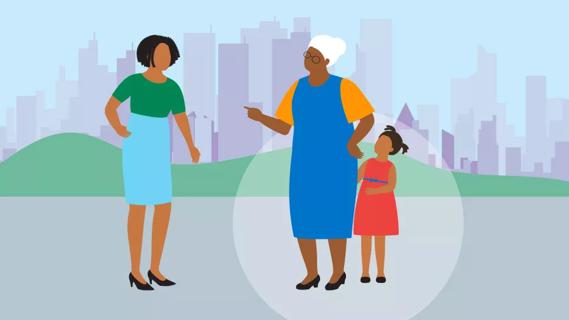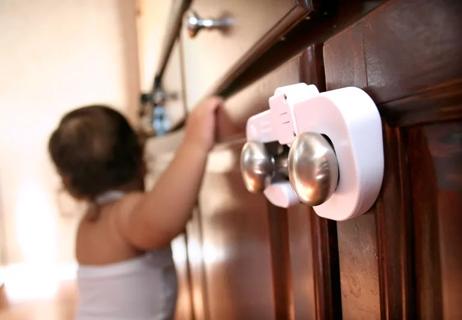It’s not just about people you don’t know — it’s about behaviors that don’t feel right.

If you grew up in the era of “stranger danger,” you probably remember being told to avoid white panel vans and people offering candy. The idea was simple: Strangers are the “bad guys” — and they look the part.
Advertisement
Cleveland Clinic is a non-profit academic medical center. Advertising on our site helps support our mission. We do not endorse non-Cleveland Clinic products or services. Policy
Now, we know better. More often than not, the people who do the most harm are the ones you know and trust. That’s why today’s safety conversations focus on “tricky people” instead.
Who are tricky people? And how can you help your child recognize them? Pediatrician Richard So, MD, shares how to have this important conversation.
When you talk with your child about staying safe, it helps to break adults into three simple categories:
“It shifts the focus from the stranger danger idea of, Do you know this person? to Does this person deserve your trust?,” Dr. So explains. “It’s about focusing on behaviors, not familiarity.”
Through this lens, that could mean people your child expected to trust can turn out to be the “bad guys.”
That shift in thinking matters — especially when you look at the statistics.
According to a 2022 U.S. Department of Health and Human Services report, 76% of child abuse is committed by a parent. And the National Center for Missing and Exploited Children reports that only 1% of abductions involve a stranger.
Advertisement
So, while the “scary stranger” scenario grabs the headlines, reality hits closer to home: Harm often comes from someone who has built up your trust. Teaching kids to spot tricky behavior — even when it happens in adults they thought were safe — is one of the best ways to protect them.
Tricky people use certain tactics to build trust, create confusion or take control. Dr. So recommends explaining these potentially red flag behaviors to kids in clear, age-appropriate ways:
Bottom line: If an adult — any adult — does something that makes you feel scared, confused or uncomfortable, they may be a tricky person.
No one wants to imagine their child being targeted. And you don’t want to burden them with fears. But giving kids the tools to spot warning signs and grooming behaviors can help keep them safe.
“The goal is to balance safety without fostering anxiety,” Dr. So says. “By age 3, kids can start learning that some adults might not be safe — and that they have the power to protect themselves.”
Dr. So shares a few tips to help you teach your child:
Advertisement
Most importantly, keep the conversation going.
“This isn’t a one-time talk,” stresses Dr. So. “It’s a message your child should hear often — in a way that builds confidence, not fear.”
Advertisement
Learn more about our editorial process.
Advertisement

Sexting has become all too common among kids, putting them at risk for bullying, blackmailing and human trafficking

It’s never too early to teach your kids who strangers are and how to avoid unsafe situations

Talk with your kids about online risks, and consider monitoring their activity

Many cosmetic products can cause poisoning and chemical burns

Install cabinet locks, outlet covers and safety gates to keep your child safe

Consider other outdoor activities

Babies can get congested easily, but you can calm their cough by keeping them hydrated, using nasal drops and running a humidifier

The emergency room is for serious medical issues; urgent care can help when you can’t get a quick appointment with your child’s doctor

Leg-related symptoms indicate DVT, while chest symptoms point to a pulmonary embolism

There are many different ways to love someone and yourself

Looking down at your smartphone or computer screen can stress muscles in your neck, shoulders and back